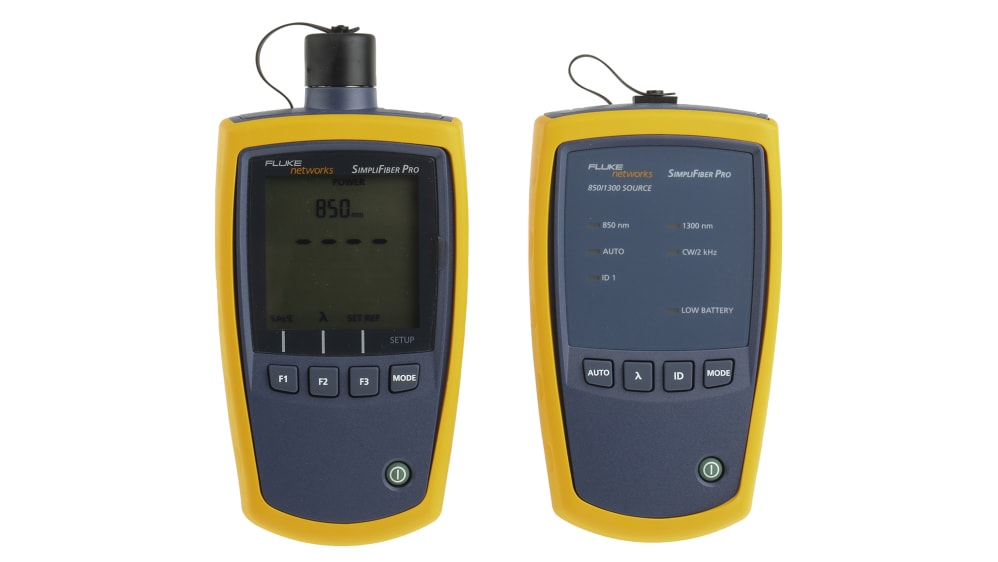Discover the Value of Optical Fibre Testing in Modern Telecom
In the world of modern-day telecommunications, the relevance of optical fiber screening can not be overemphasized, as it offers as the backbone for guaranteeing network dependability and efficiency. By applying regular testing protocols, operators can preemptively determine prospective concerns such as signal degradation, thus securing versus disruptions that could show expensive. Advanced methods like Optical Time-Domain Reflectometry play a critical function in this process, yet numerous may overlook the broader implications of these practices. What are the specific benefits that regular testing deals, and how might it shape the future landscape of telecommunications?

Recognizing Optical Fiber Testing
Optical fibre screening is a vital process in telecommunications that ensures the integrity and performance of fiber optic networks. This screening incorporates a variety of treatments created to review the physical and useful features of optical fibres - optical fibre testing equipment. Trick specifications assessed consist of optical power loss, bandwidth ability, and fault area, which are vital for maintaining top notch communication web links
The testing procedure typically includes the use of customized equipment such as Optical Time-Domain Reflectometers (OTDR) and Optical Power Meters. OTDRs are used to identify and define mistakes, mates, and connectors within the fibre, while power meters gauge the transmitted light signal strength to identify effectiveness.
In addition, testing is carried out at numerous stages, consisting of throughout setup, upkeep, and troubleshooting, to ensure that the network satisfies sector standards and operational needs. Conformity with standards set by companies like the International Telecommunication Union (ITU) and the Telecoms Industry Association (TIA) is vital.
Advantages of Regular Checking
Normal screening of optical fibers yields various benefits that significantly improve network dependability and performance. Among the key advantages is the early discovery of prospective concerns, such as breaks or deterioration in the fibre, which can cause pricey downtime if left unaddressed (optical fibre diameter analyser). By identifying these problems proactively, telecommunications providers can minimize service disturbances and ensure consistent connectivity for their customers
Additionally, regular testing helps to maintain the integrity of signal quality. As optical fibres age, their performance can be affected by factors such as environmental problems and physical stress and anxiety. Regular analyses permit the surveillance of signal loss and general transmission effectiveness, making sure that the network runs at ideal levels.
One more considerable advantage is conformity with market requirements. Regular screening supports adherence to governing demands, thereby mitigating lawful and monetary threats connected with non-compliance. It improves the total lifespan of the fibre framework by facilitating prompt upkeep and repairs.

Common Testing Methods
Checking optical fibers employs various techniques to make certain the integrity and efficiency of telecoms networks. Among the most typical strategies is Optical Time try this out Domain Reflectometry (OTDR), which examines the whole size of the fiber by sending a pulse of light and determining the reflections brought on by blemishes or breaks. This method offers detailed information concerning the area and extent of faults.
One more widespread technique is the usage of Optical Power Meters, which measure the quantity of light sent via the fiber. This technique aids figure out the loss of signal stamina, making sure that it fulfills sector criteria. In Addition, Aesthetic Mistake Locators (VFL) are utilized to determine breaks or serious bends in the fibre by projecting a visible laser light right into the wire.
Insertion loss screening is additionally critical, as it quantifies the loss of signal power arising from links and mates within the network. Moreover, using Polarization Mode Dispersion (PMD) testing analyzes the influence of fiber features on signal honesty.
Each of these techniques plays an important role in keeping the efficiency and dependability of optical fibre networks, ultimately adding to smooth telecoms operations.
Impact on Network Efficiency
The stability and performance of optical fibre networks straight visit site affect general network performance. In modern-day telecoms, the performance of information transmission counts heavily on the high quality of the optical fibres made use of. Any type of degradation in the fiber's condition-- whether as a result of physical damage, contamination, or too much bending-- can bring about boosted attenuation and signal loss, dramatically affecting information stability and speed.
Normal optical fibre screening is vital to identify and correct possible concerns before they materialize as network failures or slowdowns. Strategies such as Optical Time Domain Reflectometry (OTDR) and insertion loss screening enable service technicians to measure the efficiency of fiber links precisely. These examinations not only examine the physical problem of the fibres yet also make sure compliance with market criteria, thereby securing the network's reliability.
Additionally, a well-maintained optical fibre network adds to reduced functional prices and improved client complete satisfaction, as end-users experience less disturbances and higher data prices. Ultimately, the focus on extensive optical fibre testing techniques functions as a foundation for sustaining robust telecoms infrastructure, making certain that provider can satisfy the expanding demands for transmission capacity and connection in today's electronic age.
Future Trends in Evaluating
As we look ahead, developments in innovation are poised to reshape optical fibre testing in telecommunications. The rise of automation and expert system (AI) is expected to enhance the efficiency and accuracy of screening procedures. Automated screening systems can carry out detailed evaluations with very little human intervention, substantially minimizing the capacity for click for more info errors and accelerating time-to-deployment.
Additionally, the combination of artificial intelligence formulas will make it possible for anticipating maintenance, allowing network suppliers to visualize potential issues prior to they intensify into failings. This positive method not only boosts network dependability but also maximizes operational costs.
An additional arising trend is the development of mobile screening tools that use real-time analysis - ofda. These tools will encourage professionals to carry out on-site diagnostics rapidly, promoting quicker resolutions and improving service high quality
The expansion of 5G networks better requires the advancement of testing methodologies. As transmission capacity demands increase, traditional testing methods may no much longer suffice. Ingenious solutions such as optical time-domain reflectometry (OTDR) and advanced spooky analysis will come to be important in ensuring the stability and efficiency of high-speed connections.

Final Thought
To conclude, optical fibre screening is necessary for guaranteeing the honesty and dependability of modern telecommunications networks. Regular screening methods not only help determine potential issues such as signal loss and faults yet additionally contribute to improved network efficiency and customer complete satisfaction. As the need for smooth connection continues to grow, the fostering of innovative screening techniques will certainly play a crucial function in keeping top quality network requirements and sustaining the evolving landscape of telecommunications.